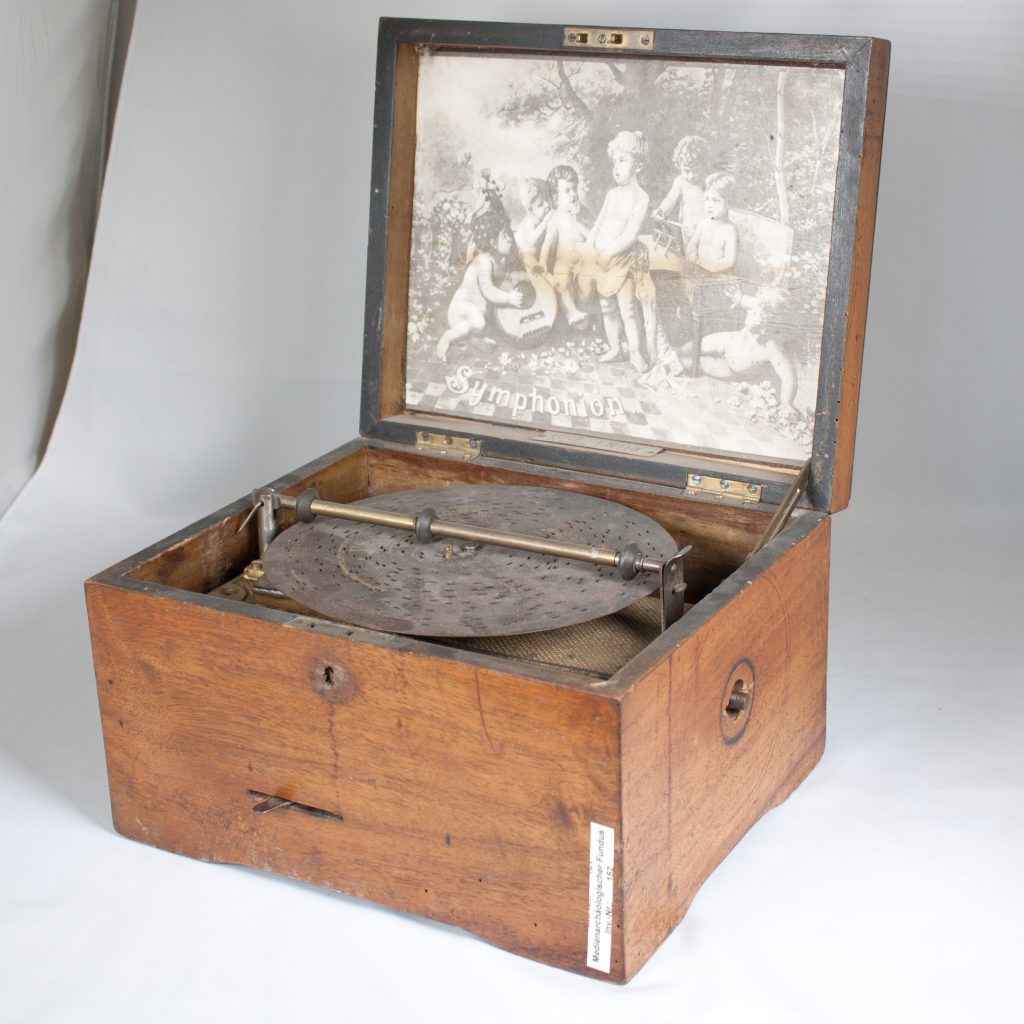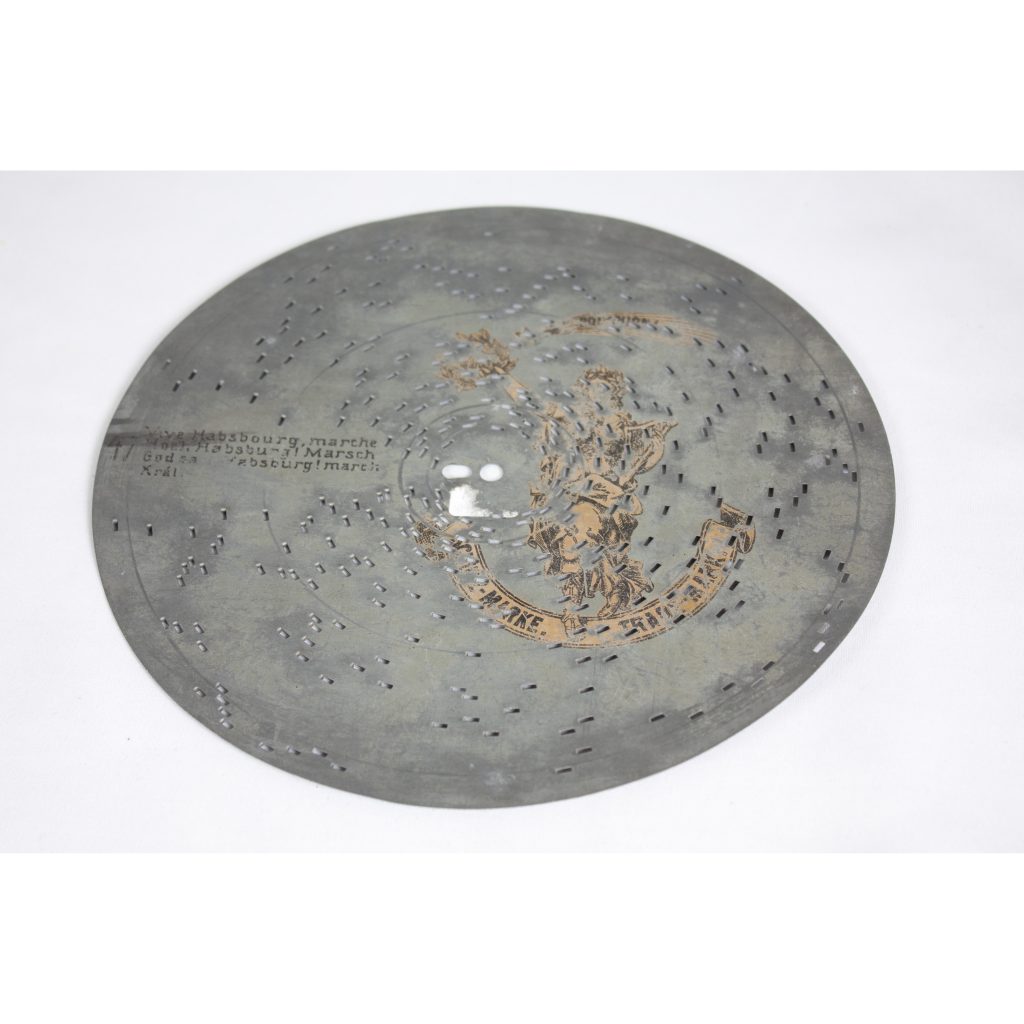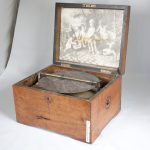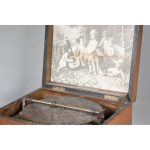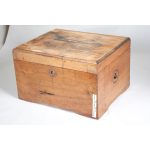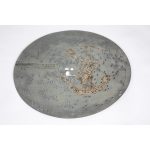Artefacts
Symphonion music box
Symphonion music box
(Accession Number: 152)
First produced in 1886 by a company in Leipzig, the Symphonion music box was a commercially successful model of a music box with exchangeable disks. Despite its visual similarity with a shellac or vinyl record, the working principle of the music box disk is different. It follows the general design of a street organ’s barrel or the paper strip of a player piano, albeit in a different form. Here, single pins placed at a certain distance from the center of the disk trigger individual notes. When the disk has completed a full circle, the piece in the music box thus ends, whereas the vinyl record moves on to the next part of its spiral groove.
The music box and the disk shown here are part of the department’s collection of historical devices, the Media Archaeological Fundus (accession no. 152). The disk contains a rendition of the march “God Save the Habsburgs” by Johann Nepomuk Král.
© 2015 – 2026 Humboldt-Universität zu Berlin

